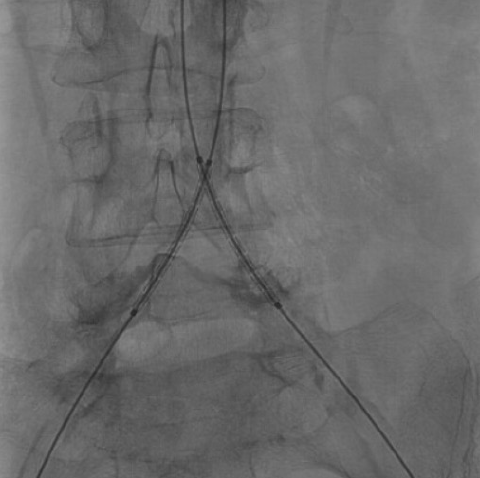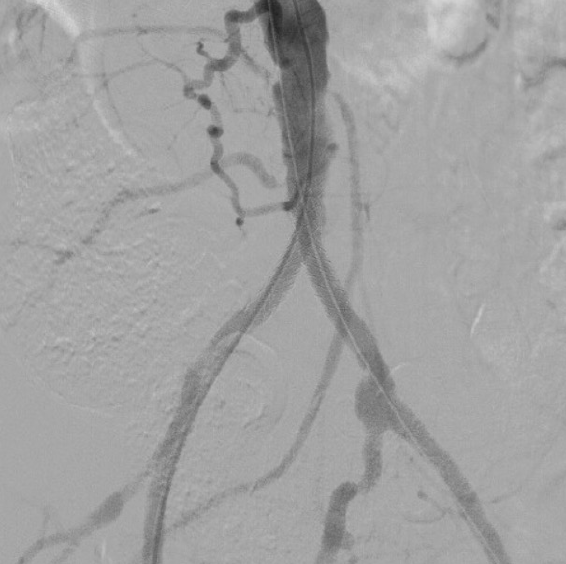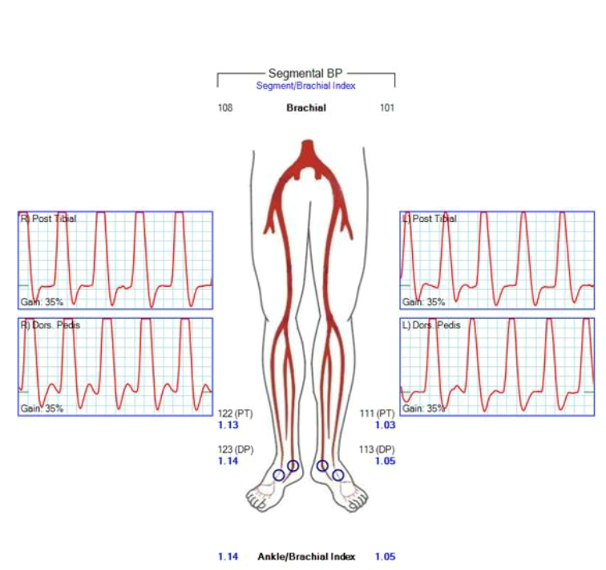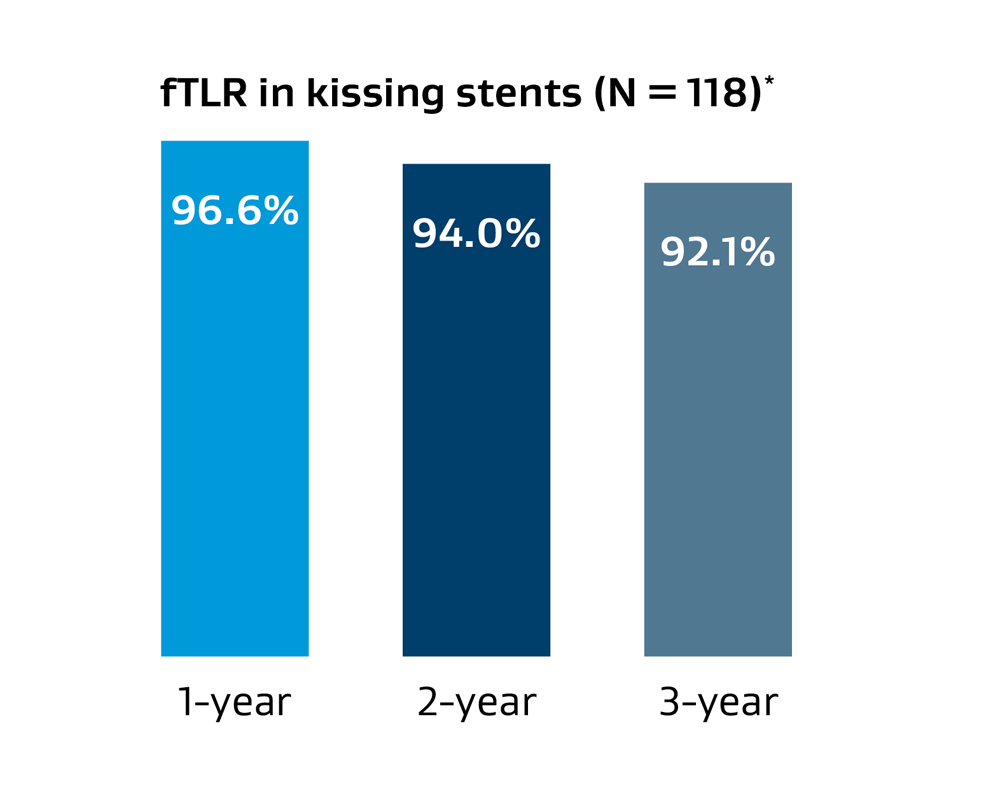Treating severe aortoiliac occlusive disease (AIOD) at the aortic bifurcation
Case submitted by Jean Panneton, M.D.
Norfolk, Virginia
Challenge:
- 73-year-old female presented with bilateral buttock, thigh, calf and foot claudication.
- Femoral pulses not palpable bilaterally.
- Relevant patient history:
- Breast cancer, hypertension, hyperlipidemia
- Former heavy smoker
- Baseline ankle-brachial index (ABI) = 0.49 bilaterally.

Figure 1. Aortoiliac occlusive disease at aortic bifurcation.
Procedure:
- Angiography revealed severe calcification of the bilateral common iliac arteries with anterior tibial and posterior tibial run-off to the right foot and posterior tibial run-off to the left foot (TASC II D lesion).
- Deployed two 6 x 39 mm GORE® VIABAHN® VBX Balloon Expandable Endoprostheses (VBX Stent Graft) simultaneously in a kissing stent technique (Figure 2).
- Follow-up angiogram showed successful deployment and brisk distal run-off (Figure 3).

Figure 2. Positioning of kissing bilateral VBX Stent Graft.

Figure 3. Post-deployment angiogram.
Result:
- Post-procedure follow-up revealed resolution of claudication symptoms. Right ABI = 1.01, Left ABI = 0.98.
- At six-year follow-up, patient remained asymptomatic with normal ABI bilaterally (Figure 4).

Figure 4. Six-year follow-up ABI. Left = 1.05, Right = 1.14.
Case takeaways:
Complex AIOD can be managed via endovascular means with sustained long-term clinical durability. The COBEST trial demonstrated the benefits of using covered stents over bare metal stents for TASC II C and D aortoiliac lesions.1 The Gore VBX FLEX Clinical Study evaluated the safety and effectiveness of the VBX Stent Graft for the treatment of AIOD with freedom from target lesion revascularization (fTLR) in kissing stents at one and three years, 96.6% and 92.1%, respectively.*
This case highlights the use of the VBX Stent Graft for the treatment of advanced calcific aortoiliac lesions as both safe and effective in appropriate patients with excellent long-term durability.

Images courtesy of Jean Panneton, M.D. Used with permission.
* Data on file 2020; W. L. Gore & Associates, Inc; Flagstaff, AZ.
- Mwipatayi BP, Sharma S, Daneshmand A, et al; COBEST co-investigators. Durability of the balloon-expandable covered versus bare-metal stents in the Covered versus Balloon Expandable Stent Trial (COBEST) for the treatment of aortoiliac occlusive disease. Journal of Vascular Surgery 2016;64(1):83-94.e1.
The outcomes and observations reported are based on individual case experience and the patients treated. The steps described here may not be complete, and are not intended to be a replacement for the Instructions for Use or the education, training and professional judgment of healthcare providers (HCP). HCPs remain solely responsible for making decisions about patient care and the use of medical technologies.
Refer to Instructions for Use at eifu.goremedical.com for a complete description of all applicable indications, warnings, precautions and contraindications for the markets where this product is available. RXOnly
22805444-EN